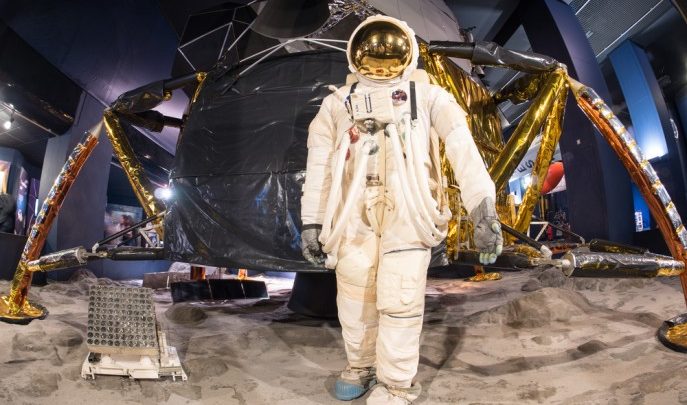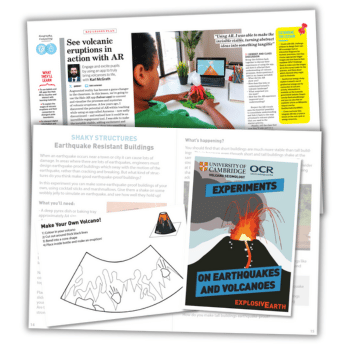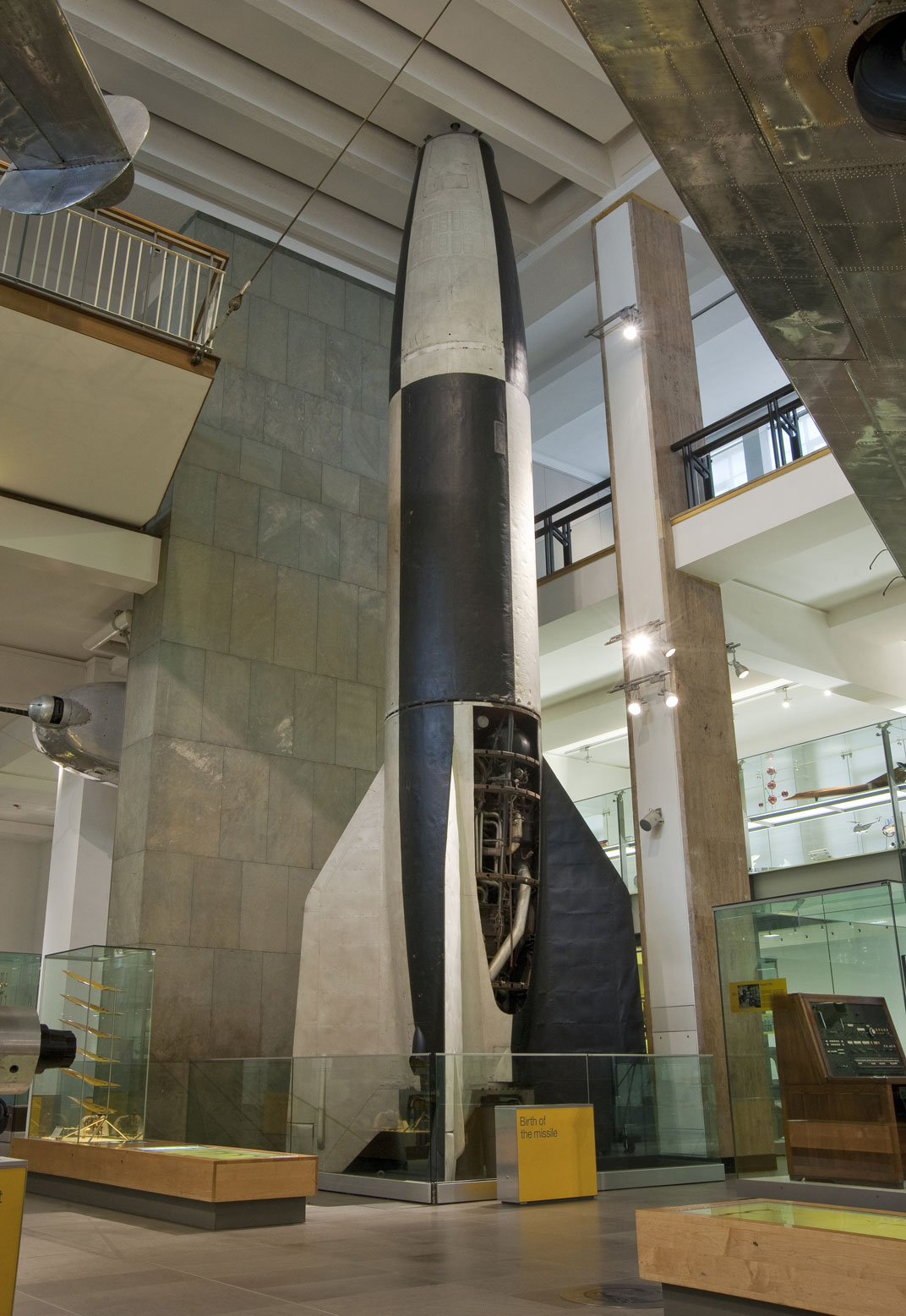Lost In Space – So This Is The Science Museum, Kids…Now What?

The vast and sprawling nature of this otherwise amazing institution makes it hard for pupils to create a timeline of events, so here's a guided tour that follows rockets to the moon

Most science teachers have been there – literally and figuratively.
Taking a group of children to the Science Museum in London may be a rite of passage but the vast, sprawling nature of the institution can sometimes make it a disjointed experience.
That’s because, I think, the Museum lacks strong narratives for its galleries. What’s missing are ‘storylines’ – actual route maps through the exhibits which select key objects and puts them in a flowing context, allowing the scientific ideas to unfold like scenes in a drama.
Pointing a class of restless Year 9s to a vitrine of James Joule’s calorific equipment and hoping they’ll be able to make sense of what they’re looking at is ambitious.
More likely, it will have the same effect as showing them a display of African tribal masks.
So in attempt at illustrating what I mean, I invite you on a short tour of the Exploring Space and Making of the Modern World galleries at the Science Museum to unpack the story of the conquest of the stars.
Exploring Space
This gallery is on the ground floor, straight ahead of you as you go in, past the range of large beam engines.
As you enter the gallery, turn left for Portrait of Isaac Newton. Standing in front of this large picture is a great place to explain the centrality of Newton’s Laws to all kinds of motion, and his groundbreaking proposal that if an object could be accelerated fast enough it could outrun gravity and escape into space.
There is a great diagram showing the escape velocity principle about halfway down the gallery on the left, near a case showing various space rocket models.
To the left of Newton is a beautiful diorama of a V2 rocket launch. The launcher among the little fake trees really brings the clandestine nature of the Nazi rocket programme to life. Here is the point to talk about how Hitler’s scientists took Newton’s ideas seriously and became the originators of what we mean today by space rockets.

A 90-degree turn to your right brings you face to face with a mind-blowing morass of coloured pipes and valves.
Though the casual visitor might easily not make the connection, this is the engine from a real V2 rocket.
Pause here to talk about the two types of German rockets: the V1 ‘Doodlebugs’ and the V2s. Many children may have studied WW2 or had relatives who endured the Blitz, and all will be fascinated these dark origins of the space programme.
They will be staggered at the true scale of these flying missiles, and the intricate planning of their internal mechanism. Tell them that later on they will see a complete V2 shell.
Now walk a little way down to those rocket models in the case on the left again. It’s easily missed but this small and unassuming display is vital to see: it shows the development of rockets under the US space programme, from the V2 to the Saturn V which took the Apollo 11 mission to the Moon. The Saturn V model clearly shows the various stages including orbiter, lander and re-entry module. Point out in particular the 3 J2 engines on the base of the rocket.
That’s because if you now take a few steps back, next to the V2 engine sits a real-life example of the J2 engine which we’ve just seen in model form. The scale and complexity are staggering, and really bring home the sheer feats of science and engineering that were the Apollo missions.
Taking a few steps forward, guide your group to the inconspicuous display board on the pillar to the right. This shows a cutaway of the less-famous RTV1 rocket, but it is really useful because it is a great illustration of the basic multi-stage ‘firework’ principles of combustion that enables a rocket to reach those dazzling speeds that Newton predicted would be required for lift-off.
Trending
From here, cross over to the other side of the gallery, going along the narrow walkway behind the big Lunar Lander module which dominates this space. You’re looking for another case of small but expertly made models in the far corner.
These shows various rocket prototypes designed in the years before the first Moon landing.
Notice the model of the Saturn 5: it shows how the large Lunar Lander behind you sat inside the rocket on its journey to the Moon. This tiny model helps make sense of the massive, dramatic and imposing exhibit behind you.
Keep walking around the walkway until you come to the metal stepladder on the Lander. It might be best to explain that, of course, this is an accurate copy because most of the real unit is still sitting in the Sea of Tranquility on the surface of the Moon!
Encourage your pupils to stare at the steps on the ladder, and recite to the them Armstrong’s famous “giant leap for mankind” speech as he descended them. Now indicate where the Command Module sits on the top: this will become important shortly.
Conclude this gallery by walking your group over to the glass display case at the end of the gallery, in which is splendidly housed an actual sample of Moon rock.
Making of the Modern World

Before our tour finishes, take a few moments to walk into the Making of the Modern World exhibition hall straight ahead of you, past the lifts.
As you enter, you can indicate the original rocket which kicked off humanity’s obsession with the freedom of speed – Stephenson’s Rocket, at its creation the fastest man-made object ever known.
But don’t delay, keep going forwards. Your students’ eyes will be drawn to the huge multi-storey black and white edifice that is the shell of the V2. Invite them to consider such an object falling into their street, packed full of explosives.
From here, advance a few steps to the end of the story: the Apollo 10 command module.
Remind them of what we saw earlier: the model of the Apollo 11 command module, where it sat on the lander, and how it was housed in the Saturn V.
Get your group to look through the little windows at the seats in which the astronauts sat and the primitive type of technology inside. Finally, at the rear, let them marvel at the charring of the heat-proof tiles on the base of the module, testimony to the fearsome power of the atmosphere to reduce the whole mission to ashes.
And there you have it: a quick slice through just one tiny aspect of the story of science, told via a dozen or so carefully-selected objects from the Science Museum.
Gareth Sturdy is a physics teacher working in East London and a committee member of the Institute of Ideas Education Forum; follow him at @stickyphysics.











